Keynotes
The Use of Power Electronics in Harvesting Solar Energy
(Prof. Nasrudin Abd Rahim, University of Malaya, Kuala Lumpur, Malaysia)Research opportunity in Metal Chalcogenide Films and nanostructure for PV
(Prof. Ahmed Ennaoui, Helmholtz-Zentrum Berlin, Germany)Assuring Adequate Primary Frequency Response in Power Systems with High Levels of Wind Power
(Prof. Nicholas W Miller, General Electric Company, USA)Research trends and future direction of chalcogenide thin-film solar cells
(Dr. Takashi Minemoto, Ritsumeikan University, Japan)Urban Mitigation Techniques to Counterbalance Climatic Change and Heat Island
(Prof. Mat Santamouris, National and Kapodistrian University of Athens, Greece)Solar and Wind Energy will supply 50% of Global Electricity by 2030
(Prof. Ali Sayigh, World Renewable Energy Congress, UK)Current developments and future perspectives for thin film Si photovoltaics
(Prof. Rutger Schlatmann, Director of PVcomB, Germany)Bio-mimetics of Energy Systems: What Can We Learn for Technology?
(Prof. Helmut Tributsch, Carinthian University for Applied Sciences, Austria)
Tutorial
High efficiency for Dye-Sensitized Solar Cells with water-based electrolyte
(Dr. Omar Moudam, Research Institute for Solar Energy and New Energies, Morocco)The Economics of Solar Photovoltaic Energy
(Prof. Ahmad Zahedi, James Cook University, Queensland, Australia)
The Use of Power Electronics in Harvesting Solar Energy
Malaysia has one of the fastest-growing building industries in the world. Gradual depletion of crude oil supplies and continuous increase in oil prices has accentuated the need for a suitable alternative energy. A clean and efficient power supply device based on a renewable energy source must be available to address this issue.
Photovoltaic (PV) is a technology that converts solar energy into electricity, and its market growth is synchronised with the development of inverter technology. Inverter is the heart of a grid-connected PV system. Essentially, an inverter converts DC energy produced by a PV array into AC energy required by the grid. A well-designed PV system will operate unattended and requires minimum periodic maintenance. Over the last decade, PV inverter technology has evolved rapidly, in line with general development of the PV sector, with PV prices dropping to 50% of the original, and efficiency and reliability increasing. PV panels are so reliable that most manufacturers give a 10-year warranty, and a life expectancy beyond 20 years.
Harvesting solar power requires getting the energy where and when it’s available. However, the main reason solar power is not widely exploited even where it might be reasonably available is economic. Through advancements in Power Electronics research, the economics related to PV usage in solving issues of alternative energy is hoped to contribute to the PV’s continued use. This keynote presents the usage of power electronics in harvesting solar energy.
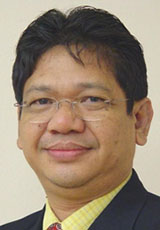
Nasrudin Bin Abd Rahim, Prof. Dr.
Department Of Electrical Engineering,
Faculty of Engineering Building,
University of Malaya,
50603 Kuala Lumpur, MALAYSIA
ResearcherID Link
Website
E-mail: nasrudin@um.edu.my
Professor Dr. Nasrudin Abd Rahim has been an academician and an active researcher for most of his professional life. Upon graduating with his first degree in 1985, a B.Sc. (Hons.) in Electrical Engineering from the University of Strathclyde in Glasgow, UK, he served briefly in industry, in the capacity of Planning Engineer with a Malaysian telecommunications company. He then entered the world of academia, at the University of Malaya, progressing from Tutor, in 1986, to Lecturer, a year later, and to his doctoral degree in 1988. He was promoted to Associate Professor in 1998, and to Professor in 2003. He was made a Chartered Engineer on 1st January 2000.
Professor Dr. Nasrudin has had vast experience in various positions of responsibility; from heading faculty department and a research centre (Centre of Research in Automation, Control and Communication), to directing the university’s distance-learning centre and becoming the Deputy Dean of Research and Postgraduate Studies. In addition to teaching engineering, he has introduced new courses of study, to the department (Advanced Power Electronics), and to the distance-learning centre (B.Sc. courses in Electrical Engineering, Mechanical Engineering, Civil Engineering, and Information Technology and Computer Science among several others). He made available M.Eng.-By-Dissertation, planning the course structure and setting the course objectives. He is personally responsible in setting up, the University of Malaya Power Energy Dedicated Advanced Centre (formerly known as UM Centre of Research for Power Electronics, Drives, Automation & Control), UMPEDAC, where he has been Director ever since. He has made the centre as a Higher Institution Centre of Excellence by the government of Malaysia. He has won the university’s Excellent Service Award, for six years, first in 1999, then successively from 2002 to 2006. In 2010, he was nominated Fellow Member of the Academy of Science Malaysia.
His professional contribution in imparting and adding to knowledge, and furthering progress in his field, extends beyond the perimeters of the university. At regional and international levels, he has served in various capacities for IEE and IEEE, the most recent has been the Chair of the IEEE Power Engineering Society Motor Sub-Committee Working Group 8 upon his election to the position in 2006. He also has been made the Malaysia SEE Forum Coordinator in 2009. In research, he has led, and co-researched, projects of national and international importance, with funding totaling millions of ringgit. He is a published author of more than 100 refereed journals, 175 articles, and books, and has had more than fifteen PhD candidates graduated. Among many other academic and field-related awards won locally and internationally, is the AUNSEED-Net Research Grant, of which he had the honor of being its first recipient. He has on 1st March 2008 been made Visiting Research Fellow to the University of New South Wales, Australia, a position he will hold for three years.
Research opportunity in Metal Chalcogenide Films and nanostructure for PV
Thin film PV technologies have been advanced considerably in the last few years and have demonstrated the potential to achieve low cost and high throughput production. Binary and multinary chalcogenide materials with their direct gap and high absorption coefficients allow for the fabrication of thin-film photovoltaic modules with minimized material use and the possibility for using low cost non-vacuum methods and alternative substrates. Highly efficient photovoltaic devices fabricated with Copper-indium-selenide (CISe) and its gallium or sulfur derivatives Cu(In,Ga)(S,Se)2 (CIGSS) [1,2]. Recently a very promising material: Kesterites Cu2ZnSn(S,Se)4 (CZTSS) has emerged. Basically, this material is derived from CuInS2 (CIS) by replacing In(III) with Zn(II) and Sn(IV). Both Zn and Sn are abundant and non-toxic elements. Obviously CIGS and CZTS help to make the mass production of solar cells more realistic. CIGS modules can be considered the solar technology with the greatest manufacturing potential. However due to the scarcity of indium, with comparable efficiency, CZTS has a better chance to increase public acceptance and to easy integrate into buildings and consumer products. This can increases manufacturing levels to more than tens of Gigawatts (worldwide continuous electricity consumption is 15 Terawatts). Recently, CZTS thin film solar cell with power conversion efficiency over 10% was found by IBM ´s group using a combination of wet chemical processing and annealing [3]. Other non-vacuum methods such as electroplating show promising efficiency [4]. The two main strategies to reduce the cost of power production in photovoltaic devices consist of increasing efficiency and lowering production costs of the starting materials. Non-vacuum processes can in many cases match the coating quality of vacuum-based processes, while providing significant advantages in capital costs, operating costs, functional complexity, and competitive scale. A particularly attractive family of non-vacuum film deposition processes is based on Nanoparticle ink NPs that can serve as precursor from which high-quality final films can be formed. Particulate layers can be deposited onto large areas by a wide variety of efficient, low-cost processes such as drop on demand D-O-D printing or screen/spin coating. In this paper we focus on recent development in CIGS and CZTS solar cells and modules. Implementing different non-vacuum processes throughout certain steps of manufacturing in order to accomplish both efficiency and lower costs and the requirements for efficient photovoltaic devices using CIGS and CZTS materials are discussed.
[1] M. A. Contreras, T. Nakada, et al. WCPEC-3_, Osaka, Japan, 2003, p. 570.
[2] A. Ennaoui, Renewable Energy 49, (2013) 68
[3] T. K. Todorov , K. B. Reuter , D. B. Mitzi , Adv. Mater. 2010 , 22 , E156 .
[4] Ennaoui A, Lux-Steiner M, Abou-Ras D, et al. Thin Solid Films 517 (2009) 2511
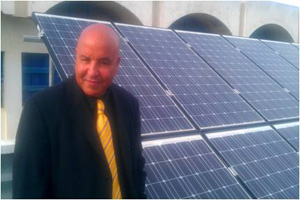
Ahmed Ennaoui, Professor
Helmholtz-Zentrum Berlin für Materialien und Energie GmbH
Hahn-Meitner-Platz 1,
14109 Berlin, Germany
E-mail: ennaoui@helmholtz-berlin.de
Presently, Prof. Ahmed Ennaoui is working as Senior Scientist and head of the research group: Thin Film and Nanostructured solar cells in HZB "Helmholtz-Zentrum Berlin für Materialien und Energie GmbH". His research covers the processing of new materials, properties and applications in Photovoltaic emerging technologies. He is supervising PhD and M. Sc. students as well as postdoctoral associates. He is involved in different grant projects financed by the European commission, German Federal Ministry of Education and Research BMBF. He is working on different project related to novel materials for photovoltaic. He is in charge of scaling up wet chemical processing for Cadmium free buffer CIS and CIGS absorbers provided by different industry partners: Sulfurcell, Avancis (ATHLET project) and Bosch Solar, Manz (NeuMas project) with "PVcomB - Kompetenzzentrum Dünnschicht- und Nanotechnologie für Photovoltaik Berlin" Meanwhile he is supervising student at "Freie Universität" Berlin on in "Lehrseminar Erneuerbare Energien". Since 2009 he works in collaboration with Research Center for Solar Energy Chemistry at Osaka University, and taught several courses on Research Opportunities and electroplating of binary and ternary compounds for PV applications. Ahmed Ennaoui is author and co-author of more than 160 scientific papers and 3 patents all of them on innovative materials for solar energy conversion. He is serving as editorial board for Elsevier. He published two special issues in the journal Solar Energy Materials and Solar Cells. He is serving as Scientific Advisory Board member for the Moroccan "Institut de Recherche en Energie Solarie et Energies Nouvelles, IRESEN". His research interests are in advanced materials, nanosynthesis, photoelectrochemistry, solid state devices and novel device concepts for next generation solar cell. He is working on high efficiency Cu-chalcopyrite (Cu(In,Ga)(S,Se)2 thin film solar cells. and nanosynthesis of Cu-Kesterite Cu2ZnSn(S,Se)4 nanoparticles (NPs) for printing PV technology.
Assuring Adequate Primary Frequency Response in Power Systems with High Levels of Wind Power
Grid integration of wind power plants is complicated by a number of issues, primarily related to wind variability and the electrical characteristics of wind generators. Frequency control is a particularly significant issue with high levels of wind and solar penetration. A typical wind plant appears to the grid as a substantially different generation source than a conventional power plant, with an energy source that is inherently uncontrollable. The electrical characteristics of variable speed wind generators result in a disturbance response that is naturally different from that of conventional synchronous generators. Without special controls, a wind plant does not inherently provide inertial response unlike synchronous machines. Further, participation in the primary regulation of grid frequency through governor-like controls is not typically provided.
With higher levels of wind and solar penetration, synchronous generation may be de-committed as output is displaced by lower marginal cost wind generation, or may be dispatched to lower power levels. The mix of governor response will change. The work presented in this paper focuses on under-frequency events caused by generation trips, as there is widespread and growing concern in North America and North Europe about system response to under-frequency events.
The paper presents selected results from several recent investigations of system frequency response in the large grids as it may be affected by large amounts of wind generation. This analysis with quantitative examples shows that frequency sensitive controls of wind plants have substantial impact. It is technically and economically possible, with controls that are commercially available today, to have better system frequency response with high levels of wind generation. New practices and policies that are candidates to address these issues and assure that grids, including those in North Africa and the Middle East, can realize the most benefit from these new functions.
KEYWORDS
Grid Frequency Response, Wind Controls, Inertial Controls, Primary Frequency Response

Nicholas W. Miller, Professor
Director
Energy Consulting
GE Energy
One River Road, 53-300Q
Schenectady, NY 12345
USA
(518) 385-9865 / 8*235-9865
2 (518) 385-5703 / 8*235-5703
E-mail: nicholas.miller@ge.com
A biography will be added soon.
Research trends and future direction of chalcogenide thin-film solar cells
Cu(In,Ga)Se2 (CIGS) solar cells are expected as high-efficiency and low-cost solar cells. In the laboratory level, the best efficiency among thin-film solar cell technologies of 20.3% was achieved, and thus regarded as next generation solar cells. There are two trends of research and development (R&D), i.e., increasing efficiency further and decreasing the production cost. To increase the efficiency further, there are two attractive approaches. One is to improve the efficiency of CIGS solar cells with CIGS absorber band gap energy (Eg) of 1.4eV that is an ideal Eg value for single junction solar cells. This approach has potential to increase the efficiency up to ~30%. Another approach is tandem solar cell configuration to convert the sunlight by two devices (two junctions) with different spectral response, i.e., different Eg absorbers. This approach, in theory, allows increasing the efficiency further higher than 30%. The second trend of R&D is the approaches of decreasing the production cost. There are many approaches regarding this, such as non-vacuum fabrication process of absorber materials to replace expensive vacuum equipments, high speed process, roll-to-roll process to increase productivity, and new absorber material without rare metal. Especially, the research of new absorber materials represented by Cu2ZnSnS4 is increasing in academic and industrial aspects world wide. In this talk, I will discuss on the current status and R&D trend (thus future direction) of chalcogenide thin-film solar cells together with the recent activity on Japanese academia and industry.

Takashi MINEMOTO, Ph.D
Ritsumeikan University
1-1-1 Nojihigashi Kusatsu Shiga 525-8577, Japan
Tel/Fax +81-77-561-3065
ResearcherID Link
E-mail: minemoto@se.ritsumei.ac.jp
Dr. Takashi Minemoto is associate professor of the Department of Electric and Electronics, Faculty of Science and Engineering in the Ritsumeikan University in Japan since 2009, and was lecturer of Ritsumeikan University, and was Post-doctoral fellow of Ritsumeikan University in 2003-2004, and was Limited term researcher in Institute of Energy Conversion in Delaware University in USA in 2001-2002. He earned his Ph.D degree in Ritsumeikan University in 2001 on “Band Gap Profiling Study of High Efficiency Cu(In,Ga)Se2 Solar Cell”. His current research works are device fabrication and characterization of chalcogenide semiconductor thin-film solar cells and analysis of outdoor field test of photovoltaic module.
Urban Mitigation Techniques to Counterbalance Climatic Change and Heat Island
Heat island refers to the development of higher urban temperatures of an urban area compared to the temperatures of surrounding suburban and rural areas. The phenomenon is related to positive thermal balance created in the urban environment because of the increased heat gains like the high absorption of solar radiation and the anthropogenic heat, and the decreased thermal losses.
Uncontestably, heat island is the most documented phenomenon of climate change and is very well documented for various geographic areas of the planet. In many cities the intensity of heat island may exceed several degrees while an important regional and temporal variability is observed. Together with the phenomenon of global climate change are the main reasons for the observed important increase of urban temperatures. The phenomenon is observed in specific areas of the cities presenting high density, and low environmental quality and results to a serious reduction of ambient thermal comfort levels and poor indoor thermal conditions.
Heat island has an important impact on the energy consumption of buildings and increases their energy consumption for cooling purposes. Various studies have shown that the cooling energy consumption of buildings may be doubled because of the important increase of urban temperatures. In parallel, because of the higher urban temperatures, the emission and generation of urban pollutants and in particular of tropospheric ozone increases considerably, while the ecological footprint of the cities suffering from heat island is growing seriously.
Counterbalancing the effects of urban heat island is a major priority for the scientific community. Several techniques have been proposed, developed and applied with quite high success. Proposed mitigation techniques and technologies involve the use of the so called cool materials presenting a high reflectivity in the solar spectrum together with a high thermal emissivity value, able to amortize and dissipate solar and thermal energy, the development of smart materials presenting high optical and thermal performances, the use of green spaces in the urban environment involving appropriate landscaping and design of urban green modules, the use of appropriate heat sinks presenting low temperature to dissipate the excess ambient heat involving the use of the ground, ambient air and water, appropriate shading and solar control of urban surfaces, and the use of cool and green roofs in urban buildings.
The present paper aims to present the actual developments on the field of urban mitigation techniques.
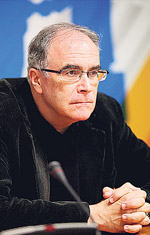
Mat Santamouris, Professor
National and Kapodistrian University of Athens
Physics Department
Group Building Environmental Research
Panepistimioupolis, 15784 Athens, Greece
Tel :+302107276847, Fax : +302107295282
http://mat.santamouris.dinstudio.com/
Mat Santamouris is Professor of Energy Physics at the University of Athens and serves or served as visiting professor at the Metropolitan University of London, Tokyo Polytechnic University, Bolzano University and the Cyprus Institute. He is Editor of the Series of Book on Buildings, Energy and Solar Technologies published by Earthscan Science Publishers in London. He served as President of the National Center of Renewable Energies and Savings for the period 2010-2012. He is Editor in Chief of the Journal of Building Environmental Research, Editor of the Energy and Building Journal, Associate Editor of the Solar Energy Journal, Consulting Editor of the Journal of Sustainable Energy and member of the Editorial Board of seven additional journals. Editor and author of 12 international books on topics related to heat island, solar energy and energy conservation in buildings published by Earthscan and other international publishers. Guest editor of seventeen special issues published by selected scientific journals. Coordinator of many major international research programs like PASCOOL, OFFICE, POLISTUDIES, AIOLOS, BUILT, RESET, INTERSET, COOL ROOFS, etc. Consultant of many International and National Energy Institutions. External examiner at eight international Universities and referee in 53 international peer review scientific journals. Reviewer of national and international research projects in the European Commission, USA, UK, Canada, France, Germany, Italy, Singapore, Sweden, Luxembourg, Ireland, Estonia, Slovenia, Qatar, Cyprus, etc. Author of almost 200 scientific papers published in peer review international scientific journals.
Solar and Wind Energy will supply 50% of Global Electricity by 2030
During the last 10 years, the yearly increase in photovoltaic (PV) application was more than 30% . Similarly, the same annual growth for wind energy is achieved. Presently there is more than 74 GW installed PV around the world equivalent to more than 60 nuclear reactors of 1100 MW. As for Wind Energy, there are more than 300 GW power installations globally. Solar thermal applications in heating, cooling, processed heat and desalination are all widely spread. The most effective small system is the evacuated tube collectors. China and Taiwan are covering more than 70% of the global market. Regarding concentrating solar power (CSP), Spain and USA are leading the market. Again more than 200 CSP already built or in the process to be built ranging from few MW to 500 MW. In term of employment and job scenario for example in the USA, renewable energy attributed to 13.5% employment growth compared with 2.4% national growth. The cost of electricity generation is in par with that of oil and gas electricity in most countries in Europe and America.
The paper will demonstration the importance of solar and wind applications in generating electricity and creating employment for green economy in many parts of the world.
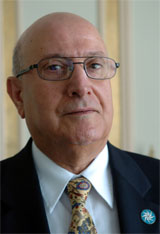
Ali Sayigh, Professor
Chairman of World Renewable Energy Congress
Chairman of IEI
Director General of WREN
P O Box 362,
Brighton BN2 1FD, UK
Tel: 44-1273-625-643
asayigh@wrenuk.co.uk
www.wrenuk.co.uk
Professor Ali Sayigh, British Citizen, Graduated from London University, & Imperial College, B.SC. DIC, Ph.D., AWP, CEng in 1966. Fellow of the Institute of Energy, and Fellow of the Institution of Engineering and Technology (previously called IEE), Chartered Engineer.
Prof Sayigh taught at Baghdad University, College of Engineering, King Saud University, College of Engineering, Saudi Arabia, full time and also Kuwait University as part time professor. Also Head of Energy Department at Kuwait Institute for Scientific Research (KISR) and Expert in renewable energy at AOPEC.
He started working in solar energy since September 1969. In 1984 he established with Pergamon Press his first International Journal for Solar and Wind Technology as an Editor-in-Chief. In 1990 up to present, Editor-in-Chief of Renewable Energy Journal incorporating Solar & Wind Technology, published by Elsevier Science Ltd, Oxford, UK. He is also the Editor-in-chief of comprehensive renewable energy, 8-volumes with 154 contributors.
He is Founder and Chairman of the ARAB Section of ISES since 1979, was chairman of UK Solar Energy Society for 3-years and consultants to many national and international organizations, among them UNESCO, ISESCO, UNDP, ESCWA, & UNIDO.
Since 1977, Prof Sayigh founded and directed several Renewable Energy Conferences and Workshops in ICTP - Trieste, Italy, Canada, Colombia, Algeria, Kuwait, Bahrain, Malaysia, Zambia, Malawi, India, West Indies, Tunisia, Indonesia, Libya, Taiwan, UAE, Oman, Czech Republic, West Indies, Bahrain, Germany, Australia, Poland, Netherlands, Thailand, Oman, Korea, Iran, Syria, Saudi Arabia, Singapore, USA and UK.
In 1990, he established the World Renewable Energy Congress and in 1992 the Network (WREN) which have their Congresses every two years, attracting more than 100 countries each time. In 2000 he and others in UAE, Sharjah founded Arab Science and Technology Foundation (ASTF). He is Chairman of Iraq Energy Institute.
He edited, contributed, and written more than 32-books, and more than 500-papers in various international journals and Conferences.
Current developments and future perspectives for thin film Si photovoltaics
Thin film silicon PV module manufacturers are facing tremendous pressure to increase module conversion efficiency from currently around 9 % to >10 % and at the same time ensuring production costs below 0.5 ?/Wp. Conversion efficiency of more than 10 % (stabilized) has been demonstrated on production-size modules. At the Competence Center Thin-Film- and Nanotechnology for Photovoltaics Berlin (PVcomB), part of the Helmholtz-Zentrum Berlin and closely cooperating with the Technical University Berlin, the University of Applied Sciences Berlin (HTW), and PV industry, focus has been put on light management, namely, the development of advanced transparent conducting oxides (TCO). Improved TCOs with high transparency and excellent light-scattering properties allow for thin silicon absorbers (< 1 µm).
We implemented high-mobility ZnO:Al layers as front TCO in a-Si/µc-Si tandem and triple solar cells. We clearly demonstrate the beneficial effect on cell performance, namely, an significant increase of the short circuit current over the entire spectral range.
In this contribution we discuss the results and the opportunities for high-efficiency and low cost a-Si/µc-Si PV modules. In addition, we report on our efforts on poly-Si based solar cells as a future option, enabling higher efficiency due to higher material quality.

Rutger Schlatmann, Professor
Helmholtz-Zentrum Berlin für Materialien und Energie GmbH
PVcomB, Schwarzschildstr.
3, D-12489 Berlin, Germany
Phone: +49 30 8062 15680
E-mail: rutger.schlatmann@pvcomb.de
www.pvcomb.de
www.helmholtz-berlin.de
Since May 2008 Prof. Dr. Rutger Schlatmann is director of PVcomB.
PVcomB is a center for technology transfer in Thin-Film and Nanotechnology for Photovoltaics, founded by the Helmholtz-Zentrum Berlin für Materialien und Energie GmbH (HZB), the Technische Universität Berlin and the University of Applied Sciences Berlin (HTW), in cooperation with industry partners.
From October 1st 2012, he also holds a full professorship (W3) at the University of Applied Sciences Berlin (HTW)
Rutger Schlatmann obtained his PhD at the FOM Institute for Atomic and Molecular Physics in Amsterdam, working on X-ray multilayer mirrors (1995). He then worked as a Research Scientist for the Dutch Swedish multinational Akzo Nobel, working on high strength polymer fibers (1996-1999). From 1999 until 2008 he worked as R&D manager at Helianthos BV,a company developing flexible thin film Si solar modules, formerly owned by Akzo Nobel and Shell Solar, from 2006 a full daughter of NV Nuon.
Rutger Schlatmann´s research interests include all aspects of thin film Si and CIGS based solar cells, including, e.g. new concepts for light capture and conversion, alternatives to standard absorber layer formation, and on- and offline analytics, that are ready to move from proof of principle to proof of concept.
Bio-mimetics of Energy Systems: What Can We Learn for Technology?
Nature, via its plant- and animal life splits water with solar energy, attaches hydrogen to carbon dioxide, and supplies and uses energy and materials in an entirely sustainable way. Its strategy became successful by developing great skills in exploiting environmental energy supplied at low density and taking advantage of subtle physical-chemical phenomena, which finally supported powerful energy technologies. The contribution outlines the cornerstones of nature`s energy strategy, which is backed by a series of specialized energy technologies which man does not yet dominate. It outlines how mankind could approach it gradually by scientifically and technologically addressing key challenges. The aim is to reintegrate mankind`s energy requirements on a high technical level into the tried and tested energy strategy of evolution. Important steps, which will be discussed, are the economic supply of sustainably generated hydrogen and of carbon carriers to support a bio-mimetic solar powered fuel economy. As examples of nature`s specialized supporting energy technologies the still little understood kinetic photovoltaic principle (also applicable to dye and polymer solar cells) and tensile water technology will shortly be analysed. The latter, which enables water collection and water pulling in trees is unexploited in modern technology. It has been of fundamental importance for the colonization of dry environments by green plants and the desalination of sea water at environmental temperature (by mangroves) and works via a solar powered dynamic self-organization of water in plant water conduits, with hydrogen bond dynamics accounting for the supporting feedback mechanisms. Following nature`s example in energy technology will help us to avoid mistakes and to save time during our quest for a sustainable future.
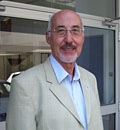
Helmut Tributsch, Professor
Carinthian University for Applied Sciences,
Bio-mimetics program, Europastrasse 4,
9524 Villach, Austria
E-mail: helmut.tributsch@alice.it
Helmut Tributsch was born in 1943 in the small mountain village Laglesie San Leopoldo in Italy. He studied physics at the Technische Universität Munich, where he also acquired his Ph.D. in 1968 under the supervision of the famous electrochemist Professor Heinz Gerischer, founder of a well-known scientific school in physical chemistry. Helmut Tributsch investigated light-driven reactions at semiconductor electrolyte interfaces, which has been one of his main research fields in the past 40 years. From 1969 to 1971, he was postdoc at the University of Berkeley (USA) and from 1972 to 1973 at the University of Santiago de Chile. In 1974 he became a scientist at the Fritz-Haber- Institut (FHI) in Berlin, Before getting an academic appointment at the Freie Universität Berlin, connected with the position as a department head at the Hahn-Meitner-Institute, Berlin. He completed his “trip around the world” as visiting scientist in Osaka University (Japan) and at the CNRS in Paris (France) and performed very important research on the conversion of light into electrical and chemical energy. He proposed in the 1970s the use of transition metal dichalcogenides (WS2, WSe2, MoS2, MoSe2) as corrosion- resistant photo-anodes for photoelectrochemical solar cells. In 1982, Professor Helmut Tributsch became the first head of a department for solar energy research at the Hahn-Meitner Institue HMI, and intensified his research on new materials for photovoltaics and catalysis, especially transition metal chalcogenides, for instance RuS2, ReS2 and FeS2 (pyrite). He established, at HMI a laboratory for materials research and synthesize new inorganic and mostly semiconducting compounds, this activity was supported by a thin-film preparation lab. He initiated the development of new techniques such time and space resolved microwave conductivity (TRMC) method and the scanning microscope for semiconductor characterization (SMSC). Professor Tributsch put down on paper his vision of a prospective energy supply of mankind, based on renewable energies, which led to a book with the title “Return to the Sun: Hydrogen, the Energy of the Future” (1982). Inspired by an initiative of Professor Tributsch to develop a sunlight driven photocatalytic membrane for splitting water into hydrogen and oxygen, the department follows the idea mimicking processes in photosynthesis. Besides his scientific interests, Helmut Tributsch wrote many popular books, published mainly in the 1980s. One of them dealt with the meteorological phenomenon of the Fata Morgana, entitled: “Riddles of the Gods. Another one, with the title “When the Snakes Wake Up”, describes the conspicuous behavior of animals shortly before an earthquake, an observation that can in principle be used to predict earthquakes. Professor Tributsch always has an open-mind, covering a broad scientific field ranging from biology to bionics, from physical chemistry to materials research and even to the principles of nature (time arrow, non-equilibrium thermodynamics). Professor Tributsch is one of the most visionary scientists in the field of renewable energies and bionics.
The Economics of Solar Photovoltaic Energy
Abstract - The objective of this presentation is to present the results of a study conducted to assess the costs, benefits and the risks associate with solar photovoltaic (PV) generation and to estimate the cost of electricity ($/kWh) produced by a solar PV farm before the installation process being started. For estimation of solar PV power generated electricity cost, the characteristics of the site, where the solar PV farm is installed are used. And also for the purpose of economic analysis, the life cycle cost and time value of money are considered.
Introduction
Solar PV power has both environmental and economic benefits. One of the most important economic benefits of solar PV power is that it reduces the exposure of nation's economies to fuel price variation. This benefit is so sizable that it could easily justify a larger scale and contribution of
solar PV energy, even if solar PV power-generated production costs were more expensive compared with other conventional power generation technologies.
One of the reasons that production costs of electricity from conventional power plants is relatively low, is mainly because the markets do not properly value the external effects of power generation.
Obviously, it is cheaper for power companies to dump their wastes, ashes for example, and the other greenhouse gases i.e. nitrous oxides, sulphur oxides and methane for free. The problem is that it creates cost for others both society and environment by damaging the society's health and damaging the environment.
According to the literature, approximately 75% of the total cost of energy for a solar PV is related to capital costs such as the cost of the solar PV modules and installation cost. The other 25% is for foundation, electrical equipment grid-connection Land rent electric installation, consultancy, financial costs, road construction, control systems, and etc. Obviously, because fuel is free, fluctuating fuel costs have no impact on solar PV-power generation costs.
Solar PV, like nuclear energy and hydropower, is capital-intensive compared to conventional fossil fuel fired technologies such as a natural gas power plant, where as much as 40-70% of costs are related to fuel and O&M. The results of the study conducted by the author of this article show that the power-generated production costs range from approximately 0.25-0.35 $/kWh at sites with low average of sun radiation, to approximately 0.15 - 0.25 $/kWh at sunny sites, with an average of approximately 0.25 $/kWh at a site with average sun radiation.
It is worth to mention here that this study focuses on the annualised life cycle cost and cost in $/kWh produced. This way of cost estimation allows us to make comparison between solar PV power-generated production cost and the electricity production cost of the other power generating technologies.
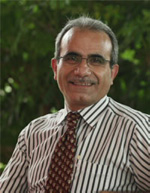
Ahmad Zahedi (PhD)
Head of Electrical and Computer Systems Engineering
School of Engineering and Physical Science
James Cook University
Townsville, 4811
Queensland, Australia
Phone: + 61 - (0) 7 - 4781 6907 (Office)
Phone: + 61 - (0) 411 165 705 (Mobile)
Email: Ahmad.Zahedi@jcu.edu.au
www.jcu.edu.au/eps/disciplines/electrical_eng/staff/JCUPRD_042513.html
Ahmad Zahedi (PhD), IEEE, SM'96 is an Associate Professor in Power Engineering and Head of Electrical and Computer Engineering at the School of Engineering and Physical Sciences of James Cook University, Queensland, Australia. He has educated in Iran and Germany and is author or coauthor of more than 160 publications including 4 books, and has trained 16 postgraduate candidates at Master and PhD levels, and completed 15 research and industry-funded projects. He has 20 years tertiary teaching and research and 6 years industry experience.
High efficiency for Dye-Sensitized Solar Cells with water-based electrolyte
Dye Sensitized Solar Cells (DSSCs) (Scheme 1) are considered so far to be the best low cost alternative to silicon photovoltaic cells demonstrating an efficiency of up to 12% and have been intensively studied since their discovery in 1991. The flexible DSSC modules are made of thin and flexible polymers or foils, which are tough, durable, safe to use and environmentally friendly since the electricity produced is clean and the manufacturing processes are based on abundant, recyclable materials. However, water can permeate into the device relatively rapidly due to the flexible plastic design, as opposed to glass. Permeation can be reduced by barrier layers, but this increases the cost. Water was frequently used as an electrolyte in early dye sensitized solar cells (DSSCs) but was abandoned in favor of organic solvents that gave much higher cell efficiencies. In the past, many reports were of the opinion that water was poisonous for DSSCs and that the presence of even a slight trace of water in the electrolyte would be detrimental to the cell performance and would reduce cell stability either by dye detachment, by formation of iodate or by a decrease in electron life-time. Recently however, it has been thought that water-based DSSCs could be relevant to DSSC development as cells properly optimized to work with water can give reasonable efficiencies and display other advantages. The highest published efficiencies for 100% water-based electrolyte cells made using 1 sun have increased slightly from 1.1%, to 2.4% and to 3%. These results could justify the return to re-examining water as a less expensive and more environmentally friendly alternative to organic solvents for DSSCs.
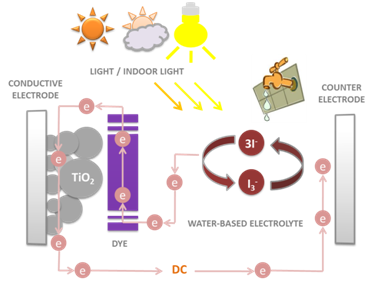 Scheme 1. Water-based electrolyte for DSSC
Scheme 1. Water-based electrolyte for DSSC

Dr Omar Moudam
Research Institute for Solar Energy and New Energies (IRESEN)
Quartier Administratif, BP 6208, Rabat-Instituts
Agdal, Morocco
Fax: 44 (0) 207 594 5801
Tel: +212 (0) 537 688 852; Mobile : + 212 (0) 665 057 595
E-mail: moudam@iresen.org
www.iresen.org
Dr Omar Moudam is the head of the PV Department at IRESEN. His previous position as Research Associate was carried out at Imperial College London in the Development and the Industrial Deployment of New Electrolytes for Dye Sensitized Solar Cells (DSSCs) in collaboration with G24i in Cardiff. His previous research within an academic capacity comprises of positions as a Visiting Researcher at the University of Oxford focusing on bio-fuel cells, a Postdoctoral Research at the University of Surrey where he conducted research on supercapacitors for energy storage and as a Research Officer at the University of Edinburgh studying the optimization of renewable energy by developing new photovoltaic luminescent solar concentrators (LSCs). His academic careers were propelled by the successful completion of his PhD from the University of Toulouse on luminescent materials for OLED and photoactive materials and he obtained his Master’s degree on Polymers from the University of Strasbourg.